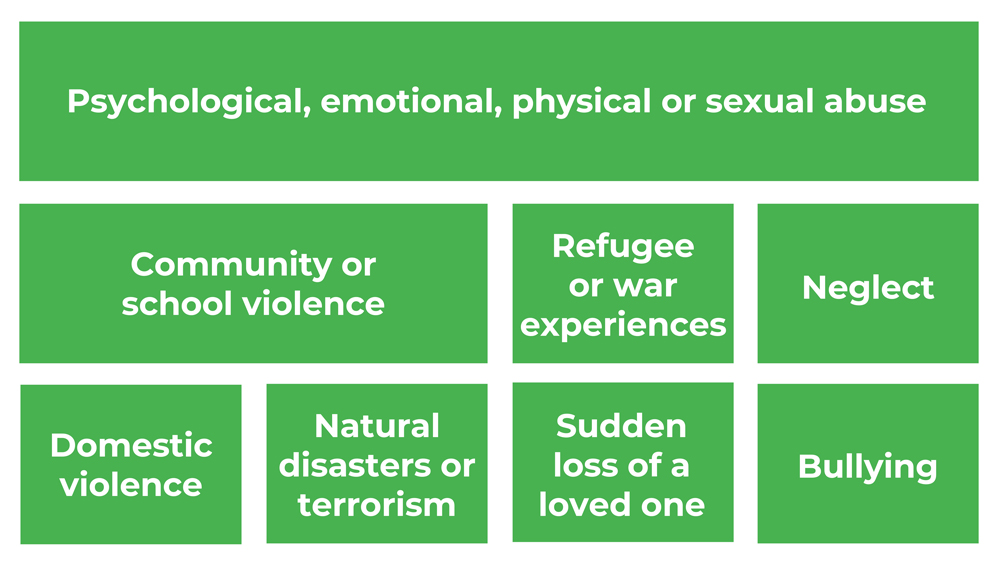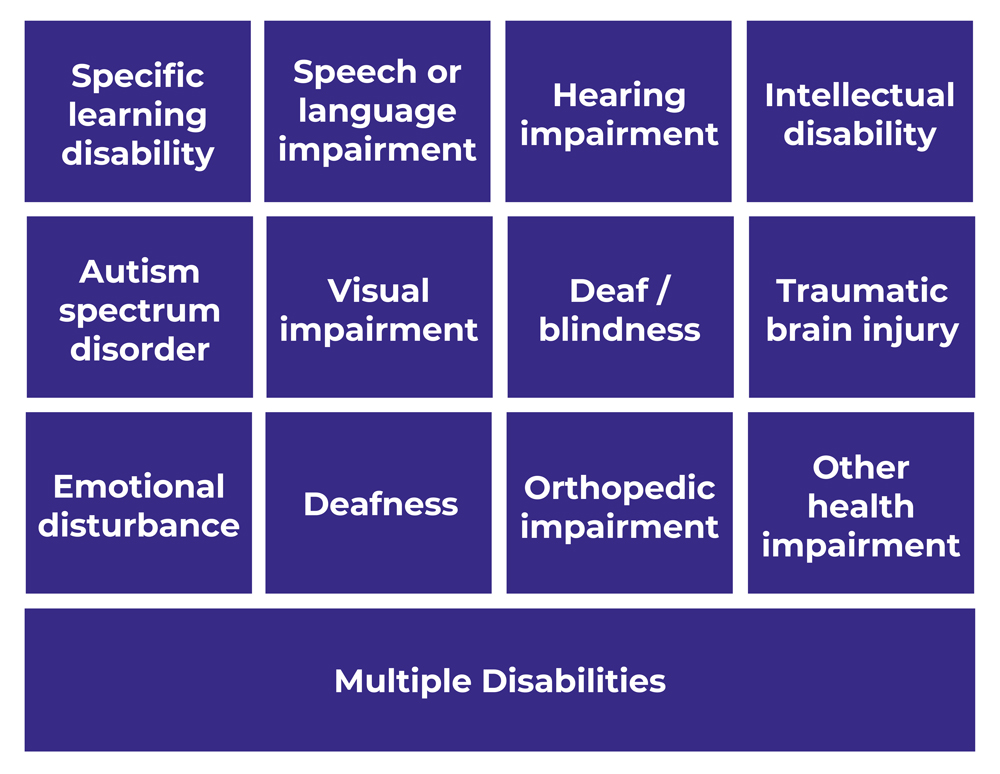Designing IEPs for Children with Trauma: Addressing the Effects of Trauma Through an IEP
Authors: Annie Carver, Esq., & Tyler Cochran, Esq.
Background: Trauma and its Impact on Development and Academic Achievement
Early childhood trauma is defined as traumatic experiences that occur in children age 0-6. Other forms of trauma include complex trauma, traumatic grief and medical trauma. More than two-thirds of children in the United States reported at least one traumatic event by age 16. Common traumatic experiences include:

Neuropsychological studies show that children who have experienced forms of trauma experience cognitive difficulties when compared to children who have not, including general cognitive and language delay, problems with memory and executive functioning, and over-responsiveness to emotional stimuli. Trauma can impact a child’s academic and social development and can result in developmental delay.

Children who have been diagnosed with an intellectual or developmental disability are more likely to have exposure to trauma.
This can be compounded by intersecting identities. For instance, post-traumatic stress disorder prevalence rates are highest among Black Americans compared to other racial groups.
Individualized Education Programs (IEPs)
Under the Individuals with Disabilities Education Act (IDEA), eligible children are guaranteed a free appropriate public education (FAPE). The IDEA requires that schools
provide special education and related services to eligible students with disabilities in the least restrictive environment (LRE). To be eligible for an IEP, students must have a qualifying disability, that disability must have an educational impact, and the student requires special education and related services. IEP federal eligibility categories include:

Students may fall into one of the federal eligibility categories either pursuant to a diagnosed condition related to their trauma (e.g., other health impairment, traumatic
brain injury, speech language impairment, or emotional disturbance) or because a student is eligible independent of their trauma symptoms, but the impact of trauma is
manifesting at school.
Developing the IEP
An IEP is developed or revised at an IEP meeting. The IEP team will develop or revise the IEP based on new assessments, observations or documented needs. Each section contains information pertinent to children who have been diagnosed with a trauma-related condition or who are manifesting signs of trauma in the school environment. Any information included or accommodations identified must be tailored to the unique needs of the student in the classroom and are not pre-determined by diagnosis.
Sections of an IEP
I. Meeting and Identifying Information
This section includes IEP team participants, the residence county/school and the service county/school, any needed emergency evacuation plan, and the primary disability, areas impacted by the student’s disability, and eligibility data, among other things.
II. Present Levels of Academic Achievement and Functional Performance
This section provides an overview of the student’s current abilities and needs in the areas impacted by their disability. Some areas of impact for students with trauma may include learning behaviors, social skills, speech and reading. This section can be used to document the impact of trauma on the student in the classroom.
III. Special Considerations and Accommodations
This section captures any classroom accommodations or supports a student needs to access their education. Accommodations and supports may include a flash pass to
a trusted adult within the school, use of headphones, or access to a calm- down corner within the classroom. This section also includes information about restraint and
seclusion.
IV. Goals
A student’s goals should address the needs identified in the present levels of academic achievement and functional performance. The goals should be
ambitious but reasonable. If the student’s traumatic experience has led to any skill deficits, such as social skills or language regression, those skills may be
addressed here.
V. Services
This section captures any related services a student may need, such as special education, counseling, speech and language services, transportation or physical therapy.
VI. Placement Data
This section includes information about how much of a student’s day is spent out of the general education setting, what type of placement the student is served in, and if the
student is not served in the home school, documentation of why. For students with trauma, the effects of trauma may be documented here.
Working with the IEP Team
- When working with an IEP team, it is in the student’s best interest to remain collaborative and to build relationships with the IEP team, so that a safe environment can be created.
- IEP teams must consider all outside assessments, but do not have to accept the assessment or implement the recommendations.
- Community or outside providers can help families by attending IEP meetings with families and explain how the student’s trauma manifests and how it impacts the student.
Final Considerations
As a service provider or family member of a child with trauma, you may need to weigh whether to disclose trauma or a history of trauma to the IEP team and whether to redact assessments given to the IEP team to protect the patient’s privacy.
References
The National Child Traumatic Stress Network (2023), Early Childhood Trauma. Retrieved from: https://www.nctsn.org/what-is-child-trauma/trauma-types/early-childhood-trauma
Substance Abuse and Mental Health Services Administration (2023), Understanding Child Trauma. Retrieved from: https://www.samhsa.gov/child-trauma/understanding-child-trauma
The National Child Traumatic Stress Network (2023), About Child Trauma. Retrieved from: https://www.nctsn.org/what-is-child-trauma/about-child-trauma.
The National Child Traumatic Stress Network (2023), Effects. Retrieved from: https://www.nctsn.org/what-is-child-trauma/trauma-types/complex-trauma/effects
Substance Abuse and Mental Health Services Administration (2023), Recognizing and Treating Traumatic Stress. Retrieved from: https://www.samhsa.gov/child-trauma/
recognizing-and-treating-child-traumatic-stress
The National Child Traumatic Stress Network (2023), Intellectual and Developmental Disabilities. Retrieved from: https://www.nctsn.org/what-is-child-trauma/populations-at-risk/
intellectual-and-developmental-disabilities
The National Child Traumatic Stress Nework (202). The Impact of Trauma on Youth with Intellectual and Developmental Disabilities: A Fact Sheet for Providers. Retrieved from:
https://www.nctsn.org/sites/default/files/resources/fact-sheet/the_impact_of_trauma_on_
youth_with_intellectual_and_developmental_disabilities_a_fact_sheet_for_providers.pdf
Roberts, A.L. et al, Race/ethnic differences in exposure to traumatic events, development of post-traumatic stress disorder, and treatment-seeking for post-traumatic stress
disorder in the United States. Retrieved from: https://www.ncbi.nlm.nih.gov/pmc/articles/ PMC3097040.
34 CFR § 300.306
34 CFR § 300.8
